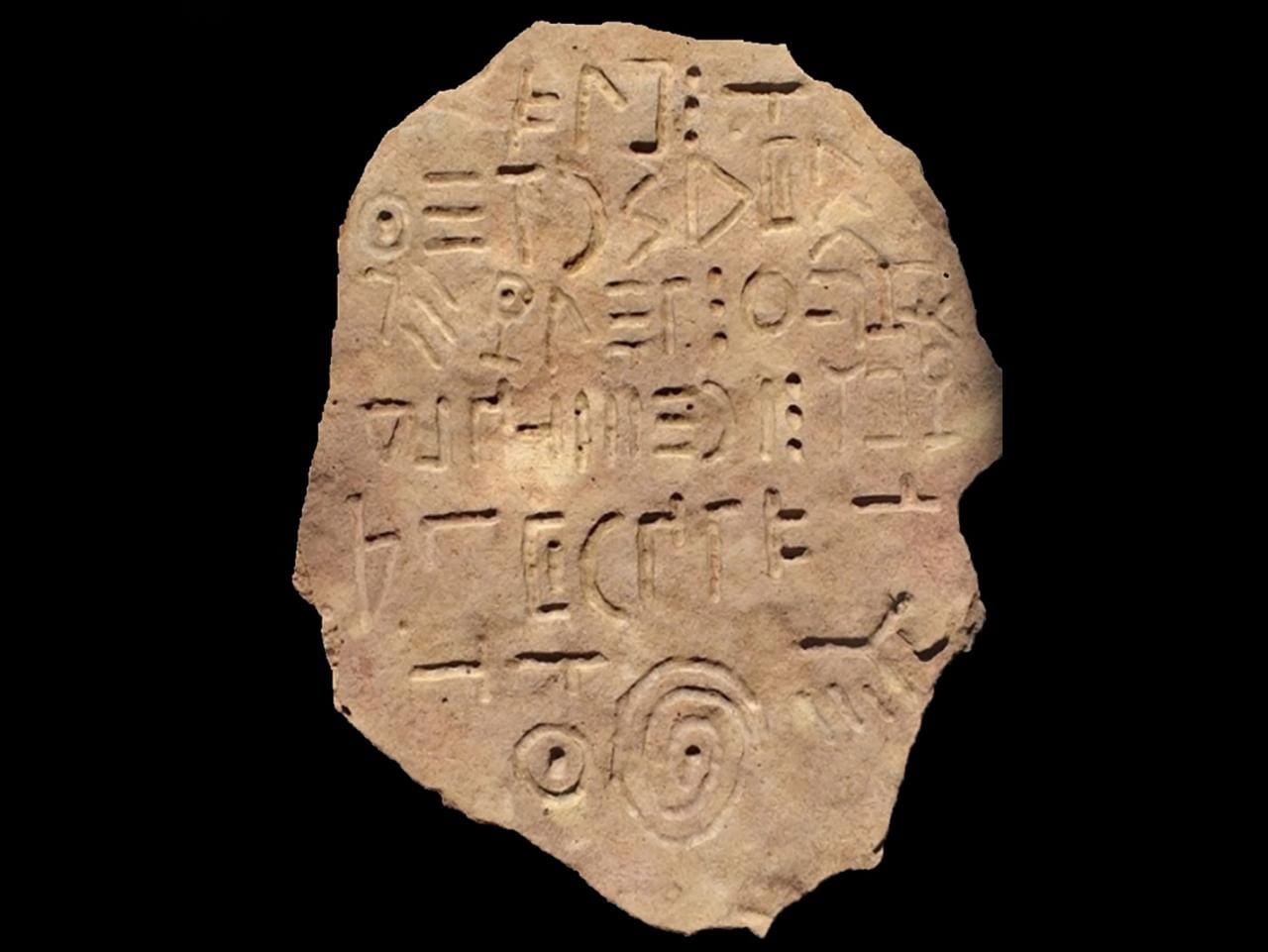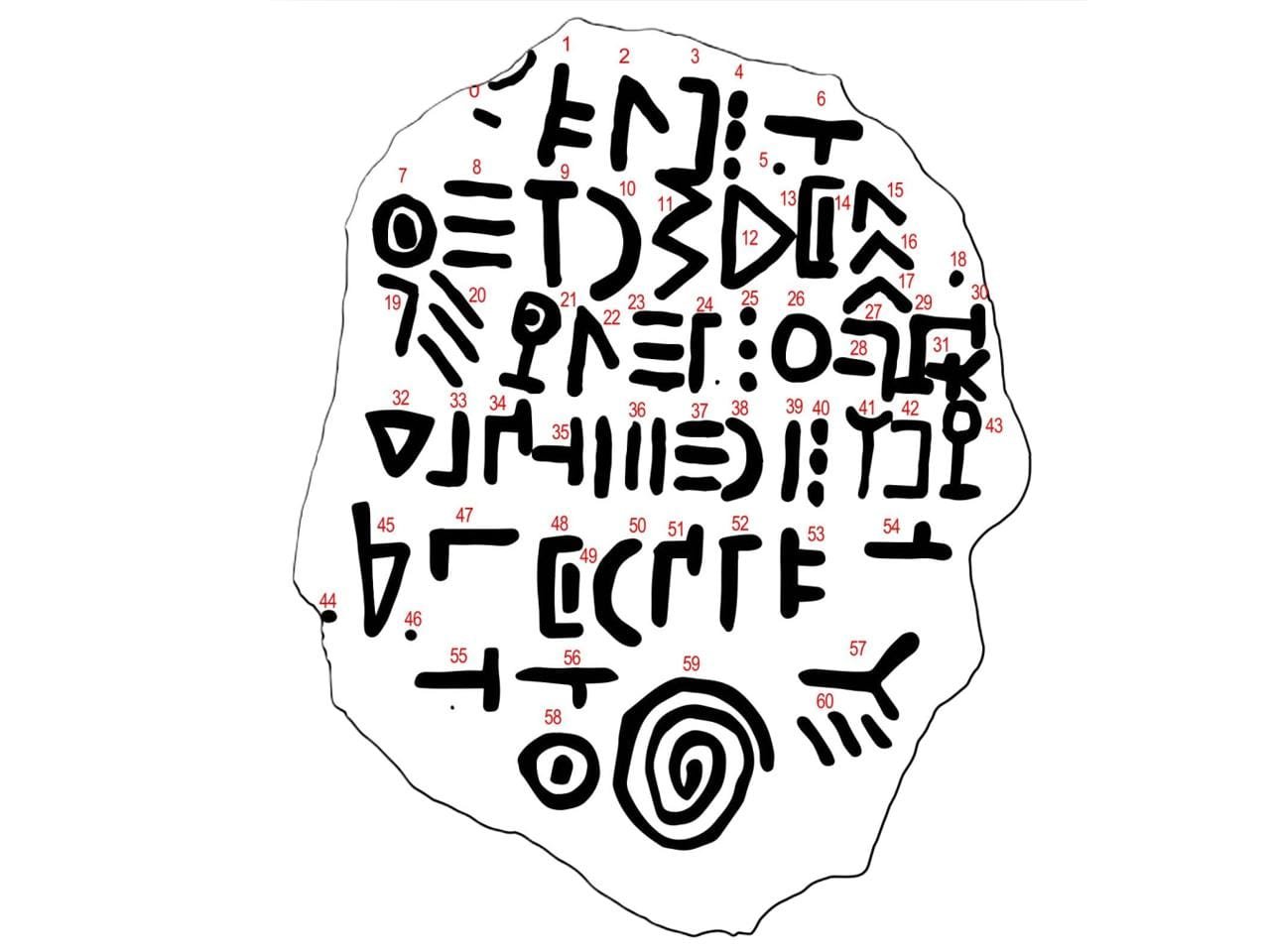A basalt tablet inscribed with an enigmatic language has been unearthed near Lake Bashplemi in Georgia’s Dmanisi region. Measuring 24.1 x 20.1 cm and made from local vesicular basalt, the artifact features 60 characters, 39 of which are unique. These symbols, arranged in seven registers, have left researchers debating their meaning and purpose.
 Tablet with inscription in an unknown language, discovered in Georgia. Credit: R. Shengelia et al., Journal of Ancient History and Archaeology (2024)
Tablet with inscription in an unknown language, discovered in Georgia. Credit: R. Shengelia et al., Journal of Ancient History and Archaeology (2024)
The symbols, created using a conical drill and smoothed with rounded tools, reflect a high degree of craftsmanship. Archaeologists have speculated that the writing may have recorded military spoils, construction projects, or offerings to deities, though definitive interpretations remain elusive. “Generally, the Bashplemi inscription does not repeat any script known to us; however, most of the symbols used therein resemble ones found in the scripts of the Middle East, as well as those of geographically remote countries such as India, Egypt, and West Iberia,” noted researchers in the Journal of Ancient History and Archaeology.
Partial resemblances have been observed with the Proto-Kartvelian script from the 4th millennium BCE and seals from pre-Christian Georgia. Additionally, some symbols echo elements of early Caucasian scripts, such as Georgian Mrgvlovani and Albanian alphabets, as well as systems from the Near East, including Phoenician and Proto-Sinaitic. However, the Bashplemi inscription is not a direct replica of any known writing system, suggesting it may represent a unique or locally developed script.
The Dmanisi region, renowned for its wealth of archaeological finds, including some of the earliest Eurasian hominin remains, now adds this extraordinary artifact to its legacy. Though the exact age of the tablet is uncertain, researchers suggest it dates to the Late Bronze or Early Iron Ages, based on ᴀssociated finds like pottery fragments and stone mortar.
 Graphic representation of Bashplemi inscription characters and their numbering. Credit: R. Shengelia et al., Journal of Ancient History and Archaeology (2024)
Graphic representation of Bashplemi inscription characters and their numbering. Credit: R. Shengelia et al., Journal of Ancient History and Archaeology (2024)
Lake Bashplemi, situated on a volcanic plateau, has historically received limited archaeological attention. Surface finds, including ceramic pieces, obsidian, and mortar stones, indicate that the area was once a hub of human activity. This tablet adds complexity to the cultural history of the Caucasus, a region long considered peripheral in the study of ancient writing systems.
Ancient texts from authors such as Apollonius of Rhodes reference writing in Colchis, a part of modern-day western Georgia, but direct archaeological evidence for such systems has been scarce. The Bashplemi tablet raises the possibility of ceremonial or administrative writing traditions that might have been recorded on perishable materials, such as wood or leather, which failed to survive the humid climate.
Thorough analysis confirms the tablet’s authenticity. Its basalt composition matches the local geology, and wear marks suggest attempts by modern locals to clean it, likely without understanding its importance. The precision of the carvings, achieved with advanced tools and techniques, underscores the technical skills of its ancient creators.
This discovery may indicate cultural exchange or influence between the Caucasus and neighboring regions in the ancient world. The partial similarities with scripts from diverse areas, including India and the Middle East, hint at a complex interplay of ideas and technologies.
More information: Ramaz Shengelia, Levan Gordeziani, et al., (2024). Discovery Of Unknown Script Characters In Georgia: The Bashplemi Lake Tablet. Journal of Ancient History and Archaeology, vol 11, no 3. DOI: 10.14795/j.v11i3.1035





